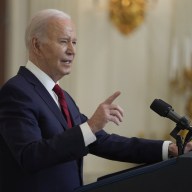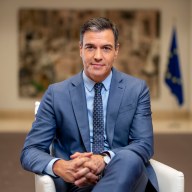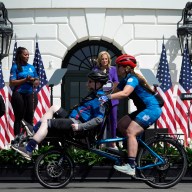No athlete dominates his sport like Lance Armstrong. But in 1996, the world cycling champion’s career nearly ended as he was diagnosed with Stage 3 testicular cancer. He was just 25 then. Even more devastatingly, the cancer had spread to his abdomen, lungs and brain. But Armstrong survived and went on to win the Tour de France a record seven consecutive years.
Today Armstrong, who later retired from competitive cycling but has since returned, runs the Armstrong Foundation, which supports cancer victims and survivors around the world. The celebrity athlete — Armstrong has dated singer Sheryl Crow and actress Kate Hudson — is also one of Twitter’s giants, with almost 2.5 million followers.
Your cancer is now in remission. How does it affect your daily life?
I appreciate my life in a completely new and better way. Cancer has also allowed me to give back to my community and now the world in a way that I would never have imagined. I’ve been a competitive athlete for most of my life and I’m sure I would have pursued a long career in professional cycling either way and with success. But cancer put suffering and pain and fear — which are all part of any Tour de France — in perspective. No mountain stage in the Tour can compare to it. Cancer gave me focus, a purpose and a lot to live for.
Women openly talk about breast cancer, but men find talking about testicular cancer very hard. Were you ever embarrassed to talk about it?
Yes. At age 25 I had won the World Championships, the Tour Du Pont and multiple Tour de France stages. Then I was told I had cancer. Like most young, healthy men, I ignored the warning signs, and never imagined the seriousness of my condition. Going untreated, the cancer had spread to my abdomen, lungs and brain.
But then my competitive spirit took over. I declared myself not a cancer victim but a cancer survivor. While I was being treated, I truly began to grasp the magnitude of cancer. At the time, there were more than eight million people living with cancer. I got really angry and became interested in fighting cancer; not just my own, but cancer in general.
Your Livestrong armbands have become ubiquitous. What’s the next step in your fight against cancer?
In 2009, we established the Livestrong Global Cancer Campaign to address the global cancer burden and support the 28 million people living with cancer today. Cancer currently claims eight million lives each year and is projected to become the leading cause of death worldwide this year. Without global action, these numbers could triple by 2030.
This year I’ll continue my efforts to reduce the burden of cancer with more urgency than ever. This global health crisis requires global solutions.
When will we have a world where cancer is no longer considered an almost-death sentence?
Today, cancer is currently one of the most preventable and curable of the major life-threatening diseases.
Unfortunately, research shows that of the 12 million people around the world who will be diagnosed with cancer this year, many of them will hide their diagnosis.
We must end the stigma that surrounds cancer.
















